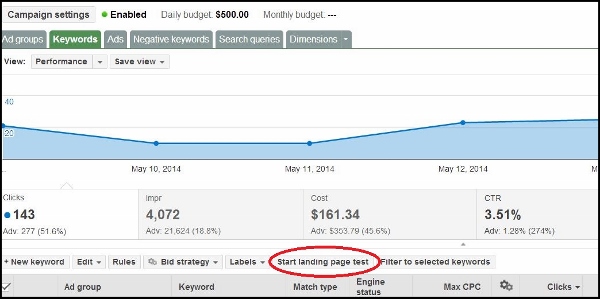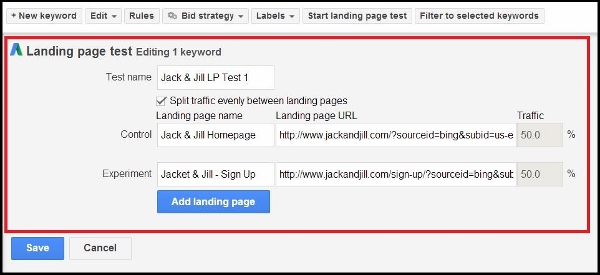
By Jennifer Johnstone, from Search Engine Watch – Latest – http://bit.ly/1jFoZ6w
As advertisers, we have a lot of questions.
- What type of messaging motivates users to act?
- Is my CTR higher this week than it was last week? Why is that?
- Yes, I know Bob, we’ve got a good landing page, but how can it be better?
The string of questions is never-ending, but it is all part of how we evolve to become better advertisers – who can pivot quicker, work more efficiently, and provide deeper insight at a moment’s notice.
This post will give you an easy fix to help you solve the age-old question (or at least the one I’ve been asking since 2010) – how can I improve conversion rates?
Conversion rates can be affected by a whole slew of things – seasonality, time of day, price increases, etc. However, your best bet to systematically improve conversion rates is to start testing your landing pages.
Try a shorter sign-up flow, change your call to action, update the color of your buttons, put your call to action above the fold, or send traffic to a page further down your conversion funnel – the list of small tweaks you can make is endless. Glad we solved that.
The biggest question you have now is – how do I test these changes?
There are several ways to test landing pages, but I have a favorite. For those of you using DoubleClick Search to manage your campaigns – you’re in luck. There is a simple feature that will make testing easy and provide you with clear results.
How to Set Up a Landing Page Test
First, select two to three landing pages you want to test, along with a list of the keywords you’d like to use for the test. It is easiest if the keywords you chose are in the same ad group or campaign. Remember, the more volume you get, the quicker you can gain significance – assuming it’s achievable.
Once you’ve chosen the testing parameters and where it will run, you’ll want to make a spreadsheet of the destination URLs you want to test. Feel free to add any UTM, ValueTrack, or third-party parameters to these URLs.
When you’re ready to launch the test, open DoubleClick Search and navigate to the Keywords tab, where you can filter for the keywords you want to test. If your keywords are grouped together, try filtering by Campaign or Ad Group name. Select the keywords you want to test and click “Start Landing Page Test.”

Once you click this, a drop-down will appear, allowing you to add a Test Name, Control Name, Experiment Name, and multiple URLs. Select “Split Traffic Evenly Between Landing Pages” and insert the correct URLs from your spreadsheet.

Click “Save” to start your landing page test.
How to Review the Test
To check in on your results, navigate to the DoubleClick Search interface, and select “Landing Page Tests” on the left menu. To review your data, select which columns best suit your test, and keep in mind that if your account is linked, you can use data from Google Analytics as well.
I prefer to see the name of the test, the start date, the visits, the actions (or transactions), and the ratio of visits to actions. However, there are many other column types available, so please chose those which work best for your business.

How to Gauge Significance
Now, to test significance and chose a clear winner, I recommend grabbing your click (visits) and conversion (actions/transactions) data from the interface above and plugging these metrics into a significance calculator. There are many choices for online significance calculators that will allow you to toggle significance between 80 and 99 percent. Once a test hits 95 to 99 percent, you’ve achieved significance!
After a test shows significance, you will have a few choices in DoubleClick; you can opt to send all traffic to the control URL, experiment URL, or you can revert back to the original URL. This makes changing your landing pages just as easy as setting up your landing page test.
Also, once you complete a test and chose where to send your traffic, the test will be logged in the “Completed” tab, so you can reference the data at a later time. Keep in mind that whenever you reference a test, you will need to change the time period in the top right to reflect when the test began. This ensures you will have a complete data set.
Conclusion
Landing page testing should be near the top of your list for optimization techniques – it’s a no-brainer and can be incredibly insightful. Through these testing insights, you can learn how users are reacting to your landing pages and tweak those pages to increase conversion rates in just a few simple steps.
